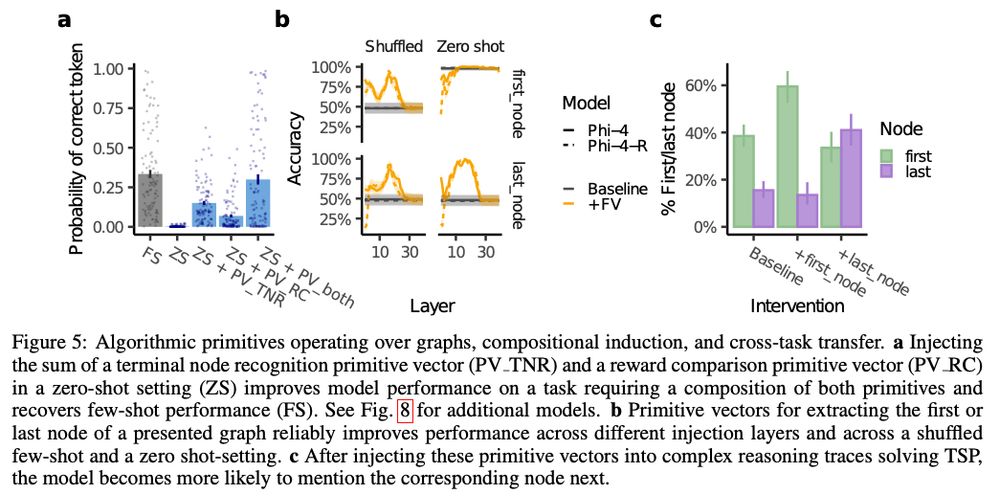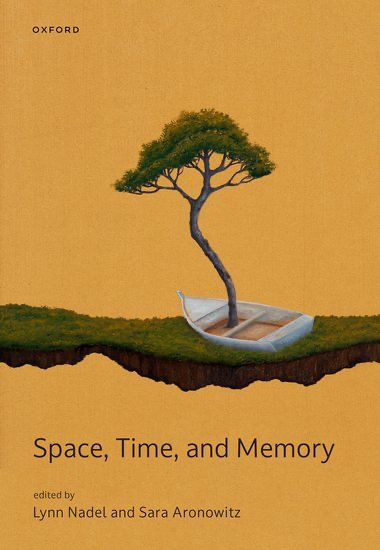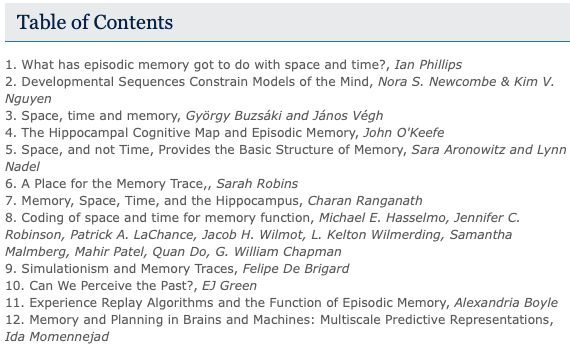
Ida Momennejad
@neuroai.bsky.social
Principal Researcher @ Microsoft Research.
AI, RL, cog neuro, philosophy.
www.momen-nejad.org
AI, RL, cog neuro, philosophy.
www.momen-nejad.org
Importantly we find that primitive vectors are compositional. Injecting a primitive vector to prompts with misleading example recovers performance, and injecting two helpful primitive raises performance to having multiple correct examples. Improvement is model-specific, but robust across models.
6/n
6/n

October 27, 2025 at 6:13 PM
Importantly we find that primitive vectors are compositional. Injecting a primitive vector to prompts with misleading example recovers performance, and injecting two helpful primitive raises performance to having multiple correct examples. Improvement is model-specific, but robust across models.
6/n
6/n
We compared (dis)similarities of primitive use across tasks & models.
Comparing Phi-4 with its reasoning-fine tuned counterpart, Phi-4-reasoning, shows that Phi-4 used more brute force path generation primitives while Phi-4-R used primitives involving comparison & verification & higher accuracy.
5/n
Comparing Phi-4 with its reasoning-fine tuned counterpart, Phi-4-reasoning, shows that Phi-4 used more brute force path generation primitives while Phi-4-R used primitives involving comparison & verification & higher accuracy.
5/n



October 27, 2025 at 6:13 PM
We compared (dis)similarities of primitive use across tasks & models.
Comparing Phi-4 with its reasoning-fine tuned counterpart, Phi-4-reasoning, shows that Phi-4 used more brute force path generation primitives while Phi-4-R used primitives involving comparison & verification & higher accuracy.
5/n
Comparing Phi-4 with its reasoning-fine tuned counterpart, Phi-4-reasoning, shows that Phi-4 used more brute force path generation primitives while Phi-4-R used primitives involving comparison & verification & higher accuracy.
5/n
4 tasks: Traveling Salesperson Prob (TSP), 3SAT, AIME, graph navigation.
We detect Algorithmic primitives for each task by clustering latent neural activations+labeling their matched reasoning traces.
We track the evolution of each primitive across layers & tokens->identify transition patterns.
4/n
We detect Algorithmic primitives for each task by clustering latent neural activations+labeling their matched reasoning traces.
We track the evolution of each primitive across layers & tokens->identify transition patterns.
4/n



October 27, 2025 at 6:13 PM
4 tasks: Traveling Salesperson Prob (TSP), 3SAT, AIME, graph navigation.
We detect Algorithmic primitives for each task by clustering latent neural activations+labeling their matched reasoning traces.
We track the evolution of each primitive across layers & tokens->identify transition patterns.
4/n
We detect Algorithmic primitives for each task by clustering latent neural activations+labeling their matched reasoning traces.
We track the evolution of each primitive across layers & tokens->identify transition patterns.
4/n
We validate primitives with causal interventions:
capture algorithmic primitives as function vectors in the latent space when performing a task,
inject primitive vector into residual stream of an LLM performing same or different ask (transfer),
& measure the effect on steering response.
3/n
capture algorithmic primitives as function vectors in the latent space when performing a task,
inject primitive vector into residual stream of an LLM performing same or different ask (transfer),
& measure the effect on steering response.
3/n

October 27, 2025 at 6:13 PM
We validate primitives with causal interventions:
capture algorithmic primitives as function vectors in the latent space when performing a task,
inject primitive vector into residual stream of an LLM performing same or different ask (transfer),
& measure the effect on steering response.
3/n
capture algorithmic primitives as function vectors in the latent space when performing a task,
inject primitive vector into residual stream of an LLM performing same or different ask (transfer),
& measure the effect on steering response.
3/n
Pleased to share new work with @sflippl.bsky.social @eberleoliver.bsky.social @thomasmcgee.bsky.social & undergrad interns at Institute for Pure and Applied Mathematics, UCLA.
Algorithmic Primitives and Compositional Geometry of Reasoning in Language Models
www.arxiv.org/pdf/2510.15987
🧵1/n
Algorithmic Primitives and Compositional Geometry of Reasoning in Language Models
www.arxiv.org/pdf/2510.15987
🧵1/n

October 27, 2025 at 6:13 PM
Pleased to share new work with @sflippl.bsky.social @eberleoliver.bsky.social @thomasmcgee.bsky.social & undergrad interns at Institute for Pure and Applied Mathematics, UCLA.
Algorithmic Primitives and Compositional Geometry of Reasoning in Language Models
www.arxiv.org/pdf/2510.15987
🧵1/n
Algorithmic Primitives and Compositional Geometry of Reasoning in Language Models
www.arxiv.org/pdf/2510.15987
🧵1/n
This summer I have the great pleasure of working w incredible students!
Grads: Thomas McGee (UCLA), Sam Lippl (Columbia), Millie Preece (Cambridge),
undergrads: Salma, Kimberly, Ziwen, Pierce, the RIPS program at IPAM (Institute for pure & applied math) UCLA.
Excited to share our new research soon📝.
Grads: Thomas McGee (UCLA), Sam Lippl (Columbia), Millie Preece (Cambridge),
undergrads: Salma, Kimberly, Ziwen, Pierce, the RIPS program at IPAM (Institute for pure & applied math) UCLA.
Excited to share our new research soon📝.




August 25, 2025 at 2:46 PM
This summer I have the great pleasure of working w incredible students!
Grads: Thomas McGee (UCLA), Sam Lippl (Columbia), Millie Preece (Cambridge),
undergrads: Salma, Kimberly, Ziwen, Pierce, the RIPS program at IPAM (Institute for pure & applied math) UCLA.
Excited to share our new research soon📝.
Grads: Thomas McGee (UCLA), Sam Lippl (Columbia), Millie Preece (Cambridge),
undergrads: Salma, Kimberly, Ziwen, Pierce, the RIPS program at IPAM (Institute for pure & applied math) UCLA.
Excited to share our new research soon📝.
Adorable! Akiko says hi 🐾

August 19, 2025 at 9:03 PM
Adorable! Akiko says hi 🐾
"The aim of science is not to open the door to infinite wisdom but to set a limit to infinite error.”
- Bertolt Brecht
The Life of Galileo
- Bertolt Brecht
The Life of Galileo

August 18, 2025 at 6:06 PM
"The aim of science is not to open the door to infinite wisdom but to set a limit to infinite error.”
- Bertolt Brecht
The Life of Galileo
- Bertolt Brecht
The Life of Galileo
1- The neuroscience & psychology chapters of Sutton & Barto 2nd edition.
full PDF: incompleteideas.net/book/RLbook2...
2- A brief history of intelligence. Not neuroAI, but popular among grad students at RLC & our MSR interns as a deep conceptual introduction. www.abriefhistoryofintelligence.com/book
full PDF: incompleteideas.net/book/RLbook2...
2- A brief history of intelligence. Not neuroAI, but popular among grad students at RLC & our MSR interns as a deep conceptual introduction. www.abriefhistoryofintelligence.com/book



July 17, 2025 at 8:28 PM
1- The neuroscience & psychology chapters of Sutton & Barto 2nd edition.
full PDF: incompleteideas.net/book/RLbook2...
2- A brief history of intelligence. Not neuroAI, but popular among grad students at RLC & our MSR interns as a deep conceptual introduction. www.abriefhistoryofintelligence.com/book
full PDF: incompleteideas.net/book/RLbook2...
2- A brief history of intelligence. Not neuroAI, but popular among grad students at RLC & our MSR interns as a deep conceptual introduction. www.abriefhistoryofintelligence.com/book
Let’s not forget Lashley thought he could remove his frontal cortex and nothing would go wrong. Much grain of salt required when reading his work.
languagelog.ldc.upenn.edu/myl/Lashley1...
languagelog.ldc.upenn.edu/myl/Lashley1...

July 6, 2025 at 12:57 PM
Let’s not forget Lashley thought he could remove his frontal cortex and nothing would go wrong. Much grain of salt required when reading his work.
languagelog.ldc.upenn.edu/myl/Lashley1...
languagelog.ldc.upenn.edu/myl/Lashley1...
Thank you, means a lot coming from you!
Gridworlds are common in tabular RL: can turn most tasks (spatial navigation, social planning, etc) into grid worlds. The cells become the task states, can have reward, & agent takes actions to transition btwn/navigate them.
www.nature.com/articles/s41...
Gridworlds are common in tabular RL: can turn most tasks (spatial navigation, social planning, etc) into grid worlds. The cells become the task states, can have reward, & agent takes actions to transition btwn/navigate them.
www.nature.com/articles/s41...

July 3, 2025 at 2:43 PM
Thank you, means a lot coming from you!
Gridworlds are common in tabular RL: can turn most tasks (spatial navigation, social planning, etc) into grid worlds. The cells become the task states, can have reward, & agent takes actions to transition btwn/navigate them.
www.nature.com/articles/s41...
Gridworlds are common in tabular RL: can turn most tasks (spatial navigation, social planning, etc) into grid worlds. The cells become the task states, can have reward, & agent takes actions to transition btwn/navigate them.
www.nature.com/articles/s41...
I've been building a model of how intrusive thoughts can warp cognitive maps (world model) in PTSD & derail goal-directed behavior. It combines successor representation & prioritized replay. I started off with a grid world, then embeddings. Today in a story recall task, reading the text was moving:

July 2, 2025 at 6:48 PM
I've been building a model of how intrusive thoughts can warp cognitive maps (world model) in PTSD & derail goal-directed behavior. It combines successor representation & prioritized replay. I started off with a grid world, then embeddings. Today in a story recall task, reading the text was moving:
“WE THE PEOPLES OF THE UNITED NATIONS DETERMINED
to save succeeding generations from the scourge of war,
which twice in our lifetime has brought untold sorrow to mankind, &
to reaffirm faith in fundamental human rights, in the dignity & worth of the human person, in the equal rights of men & women”
to save succeeding generations from the scourge of war,
which twice in our lifetime has brought untold sorrow to mankind, &
to reaffirm faith in fundamental human rights, in the dignity & worth of the human person, in the equal rights of men & women”




June 21, 2025 at 1:51 AM
“WE THE PEOPLES OF THE UNITED NATIONS DETERMINED
to save succeeding generations from the scourge of war,
which twice in our lifetime has brought untold sorrow to mankind, &
to reaffirm faith in fundamental human rights, in the dignity & worth of the human person, in the equal rights of men & women”
to save succeeding generations from the scourge of war,
which twice in our lifetime has brought untold sorrow to mankind, &
to reaffirm faith in fundamental human rights, in the dignity & worth of the human person, in the equal rights of men & women”
This research could impact more than understanding, toward more efficient & lower-emission training, fine-tuning, & designing novel architectures with algorithms in mind.
Very grateful to coauthors & UCLA's Institute for Pure & Applied Mathematics, where we met.
n/n🧵
openreview.net/forum?id=eax...
Very grateful to coauthors & UCLA's Institute for Pure & Applied Mathematics, where we met.
n/n🧵
openreview.net/forum?id=eax...

June 20, 2025 at 3:48 PM
This research could impact more than understanding, toward more efficient & lower-emission training, fine-tuning, & designing novel architectures with algorithms in mind.
Very grateful to coauthors & UCLA's Institute for Pure & Applied Mathematics, where we met.
n/n🧵
openreview.net/forum?id=eax...
Very grateful to coauthors & UCLA's Institute for Pure & Applied Mathematics, where we met.
n/n🧵
openreview.net/forum?id=eax...
We analyzed latent representations of room/node tokens described in the prompt & plot the separation of room representations across layers (Llama 3 8B & 70B).
At layer0 everything is similar, but they gradually diverge: goal W/subgoal Q closest to goal & competing room Q separated the furthest.
5/n
At layer0 everything is similar, but they gradually diverge: goal W/subgoal Q closest to goal & competing room Q separated the furthest.
5/n


June 20, 2025 at 3:48 PM
We analyzed latent representations of room/node tokens described in the prompt & plot the separation of room representations across layers (Llama 3 8B & 70B).
At layer0 everything is similar, but they gradually diverge: goal W/subgoal Q closest to goal & competing room Q separated the furthest.
5/n
At layer0 everything is similar, but they gradually diverge: goal W/subgoal Q closest to goal & competing room Q separated the furthest.
5/n
In a planning task (2-step tree) we extracted attention heatmaps across the layers from the goal token to the correct & incorrect paths.
Results don't match BF or DF search. Attention is
mostly to the goal location M, followed by nodes on the correct path, more like backward planning from goal.
4/n
Results don't match BF or DF search. Attention is
mostly to the goal location M, followed by nodes on the correct path, more like backward planning from goal.
4/n




June 20, 2025 at 3:48 PM
In a planning task (2-step tree) we extracted attention heatmaps across the layers from the goal token to the correct & incorrect paths.
Results don't match BF or DF search. Attention is
mostly to the goal location M, followed by nodes on the correct path, more like backward planning from goal.
4/n
Results don't match BF or DF search. Attention is
mostly to the goal location M, followed by nodes on the correct path, more like backward planning from goal.
4/n
Case study: navigation on deterministic graphs, a task LLMs can't do well (our NeurIPS 2023).
AlgEval
a) identifies algorithmic hypotheses, e.g. BFS, DFS
b) uses neuroscience/mech interp methods to test them, e.g. does the sequence of attended/activated tokens along the layers fit a hypothesis?
3/n
AlgEval
a) identifies algorithmic hypotheses, e.g. BFS, DFS
b) uses neuroscience/mech interp methods to test them, e.g. does the sequence of attended/activated tokens along the layers fit a hypothesis?
3/n



June 20, 2025 at 3:48 PM
Case study: navigation on deterministic graphs, a task LLMs can't do well (our NeurIPS 2023).
AlgEval
a) identifies algorithmic hypotheses, e.g. BFS, DFS
b) uses neuroscience/mech interp methods to test them, e.g. does the sequence of attended/activated tokens along the layers fit a hypothesis?
3/n
AlgEval
a) identifies algorithmic hypotheses, e.g. BFS, DFS
b) uses neuroscience/mech interp methods to test them, e.g. does the sequence of attended/activated tokens along the layers fit a hypothesis?
3/n
Our position paper argues that the ML community
should prioritize research on algorithmic understanding of generative AI. Scaling is not enough.
We propose AlgEval: A methodological path to algorithmic evaluation, bringing cognitive computational neuroscience theory/methods to interpretability.
2/n
should prioritize research on algorithmic understanding of generative AI. Scaling is not enough.
We propose AlgEval: A methodological path to algorithmic evaluation, bringing cognitive computational neuroscience theory/methods to interpretability.
2/n



June 20, 2025 at 3:48 PM
Our position paper argues that the ML community
should prioritize research on algorithmic understanding of generative AI. Scaling is not enough.
We propose AlgEval: A methodological path to algorithmic evaluation, bringing cognitive computational neuroscience theory/methods to interpretability.
2/n
should prioritize research on algorithmic understanding of generative AI. Scaling is not enough.
We propose AlgEval: A methodological path to algorithmic evaluation, bringing cognitive computational neuroscience theory/methods to interpretability.
2/n
Pleased to share our ICML Spotlight with @eberleoliver.bsky.social, Thomas McGee, Hamza Giaffar, @taylorwwebb.bsky.social.
Position: We Need An Algorithmic Understanding of Generative AI
What algorithms do LLMs actually learn and use to solve problems?🧵1/n
openreview.net/forum?id=eax...
Position: We Need An Algorithmic Understanding of Generative AI
What algorithms do LLMs actually learn and use to solve problems?🧵1/n
openreview.net/forum?id=eax...

June 20, 2025 at 3:48 PM
Pleased to share our ICML Spotlight with @eberleoliver.bsky.social, Thomas McGee, Hamza Giaffar, @taylorwwebb.bsky.social.
Position: We Need An Algorithmic Understanding of Generative AI
What algorithms do LLMs actually learn and use to solve problems?🧵1/n
openreview.net/forum?id=eax...
Position: We Need An Algorithmic Understanding of Generative AI
What algorithms do LLMs actually learn and use to solve problems?🧵1/n
openreview.net/forum?id=eax...
Pleased to say "Space, Time, and Memory", an academic book by Oxford University Press edited by the inimitable Lynn Nadel & Sara Aronowitz is now out.
I contributed a chapter, "Memory and Planning in Brains and Machines".
You can download the entire book for free:
library.oapen.org/bitstream/ha...
I contributed a chapter, "Memory and Planning in Brains and Machines".
You can download the entire book for free:
library.oapen.org/bitstream/ha...


June 9, 2025 at 8:48 PM
Pleased to say "Space, Time, and Memory", an academic book by Oxford University Press edited by the inimitable Lynn Nadel & Sara Aronowitz is now out.
I contributed a chapter, "Memory and Planning in Brains and Machines".
You can download the entire book for free:
library.oapen.org/bitstream/ha...
I contributed a chapter, "Memory and Planning in Brains and Machines".
You can download the entire book for free:
library.oapen.org/bitstream/ha...
See below! The third one is when I asked for a ref with prompt “ref”



May 10, 2025 at 1:31 PM
See below! The third one is when I asked for a ref with prompt “ref”
a) Serious failure modes getting worse --> the promise of scale didn't deliver. Inaccuracy a major issue any application should take seriously & why big tech invests in new architectures.
b) our neurips 2023 shows how hallucinations impair reasoning on simple MDPs in 8 LLMs
c) helpful but not novel
b) our neurips 2023 shows how hallucinations impair reasoning on simple MDPs in 8 LLMs
c) helpful but not novel

May 8, 2025 at 8:13 PM
a) Serious failure modes getting worse --> the promise of scale didn't deliver. Inaccuracy a major issue any application should take seriously & why big tech invests in new architectures.
b) our neurips 2023 shows how hallucinations impair reasoning on simple MDPs in 8 LLMs
c) helpful but not novel
b) our neurips 2023 shows how hallucinations impair reasoning on simple MDPs in 8 LLMs
c) helpful but not novel
a) then you disagree with openAi's own report.
O3 hallucinated on 33% of known benchmark tasks, O4-mini on 48%, O1, on 16%. see below.
b) if foundation models are used to make any predictions then hallucinations are a serious limitation
c) not a paradigm shift then
cdn.openai.com/pdf/2221c875...
O3 hallucinated on 33% of known benchmark tasks, O4-mini on 48%, O1, on 16%. see below.
b) if foundation models are used to make any predictions then hallucinations are a serious limitation
c) not a paradigm shift then
cdn.openai.com/pdf/2221c875...

May 8, 2025 at 7:48 PM
a) then you disagree with openAi's own report.
O3 hallucinated on 33% of known benchmark tasks, O4-mini on 48%, O1, on 16%. see below.
b) if foundation models are used to make any predictions then hallucinations are a serious limitation
c) not a paradigm shift then
cdn.openai.com/pdf/2221c875...
O3 hallucinated on 33% of known benchmark tasks, O4-mini on 48%, O1, on 16%. see below.
b) if foundation models are used to make any predictions then hallucinations are a serious limitation
c) not a paradigm shift then
cdn.openai.com/pdf/2221c875...
Yesss! I spend so much time learning her language my partner calls me a dog whisperer! What a privilege.

May 2, 2025 at 5:27 PM
Yesss! I spend so much time learning her language my partner calls me a dog whisperer! What a privilege.


